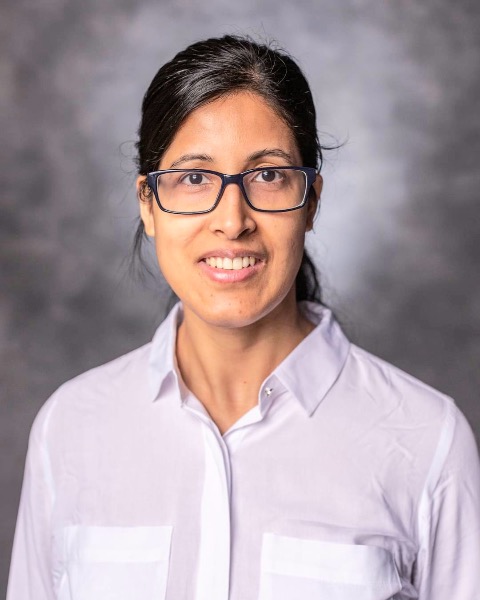ESG Poster Presentation
Social Justice and Health Equity
Wednesday Evening Poster Reception
WED-064 - Cervical Cancer Knowledge and Prevention Behavior Among Tamang Women Residing in Nuwakot, Nepal
Wednesday, April 16, 2025
6:00 PM - 7:00 PM PST
Location: Pacific I/II, 2nd Floor
Area of Responsibility: Area I: Assessment of Needs and Capacity
Subcompetencies: 1.3.2 Determine the knowledge, attitudes, beliefs, skills, and behaviors that impact the health and health literacy of the priority population(s)., 1.4.4 Develop recommendations based on findings. 1.4.5 Report assessment findings.
Research or Practice: Research
Subcompetencies: 1.3.2 Determine the knowledge, attitudes, beliefs, skills, and behaviors that impact the health and health literacy of the priority population(s)., 1.4.4 Develop recommendations based on findings. 1.4.5 Report assessment findings.
Research or Practice: Research

Babita Bhetwal, MPH Candidate
Student
Boise State University
Boise, Idaho, United States
Poster Presenter(s)
Learning Objectives:
At the end of this session, participants will be able to:
- Assess the level of knowledge, attitude, and practice regarding cervical cancer among Tamang women residing in Nuwakot, Nepal, highlighting the influence of cultural and traditional beliefs in health-seeking behavior.
- Analyze the barriers faced by Tamang women assessing cervical cancer screening and prevention services.
- Discuss the benefits and challenges to conducting primary data collection in rural Nepal.
Detailed abstract description:
Background:
Cervical cancer is a burden to lower middle-income countries, despite the advancement in diagnostic methods and tools. In Nepal, cervical cancer is a leading cause of cancer death with more than 80% of cases diagnosed at an advanced stage. Tamang, an underserved ethnic group constituting about 5.6% of the total population of Nepal, has a high poverty level, illiteracy rate, and teenage marriages, increasing the risk of cervical cancer. Knowledge and attitude toward cervical cancer and prevention may be associated with health behavior. The purpose of this study was to explore the knowledge, attitude, practice, and barriers of cervical cancer and its preventive behavior among Tamang women residing in Nuwakot, Nepal.
Methodology:
Participants were recruited by door-to-door visits to the homes of Tamang women.Tamang women (n=300), who were 18 years and older, could speak and understand Nepali language, could provide consent, and were residing in Shivapuri, Kakani, or Likhu rural municipalities of Nuwakot, Nepal, were included in this study. A structured interview, with open-and closed-ended questions, was used to assess knowledge, attitude, and behaviors. Descriptive statistics, correlation, and regression models were used to explore relationships between cervical cancer knowledge, attitude, and behavior.
Findings:
At the time of abstract submission, data is being collected. Preliminary findings indicate that ~20% of participants have some cervical cancer knowledge and 60% have a positive attitude towards cervical cancer screening and HPV vaccination. Yet many participants described seeking medical help and information from traditional healers (dhami/jhakri). They may seek Western medicine providers if the traditional healer remedy does not work. Not having any information about cervical cancer and its screening is the major reason for not undergoing cervical cancer screening.
Conclusion and significance:
Tamang women have a low level of knowledge about cervical cancer and a positive attitude towards screening and vaccination against HPV. Some factors influencing these results are lack of education, screening services, and stigma. The results of this study indicate the need for culturally tailored health education and interventions focused on Tamang women of Nepal to mitigate the existing gap in knowledge and to reduce cancer incidence and associated mortality.

